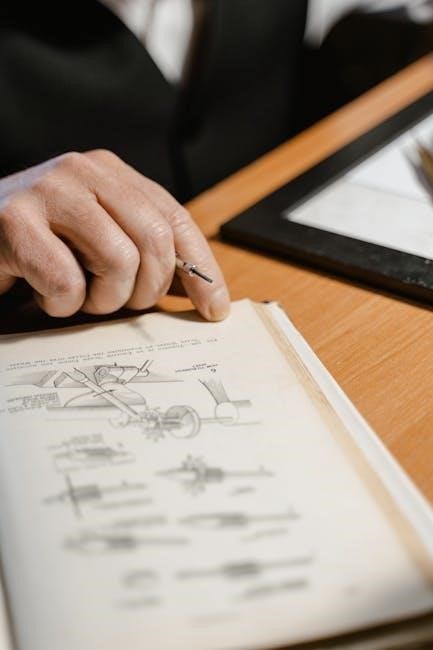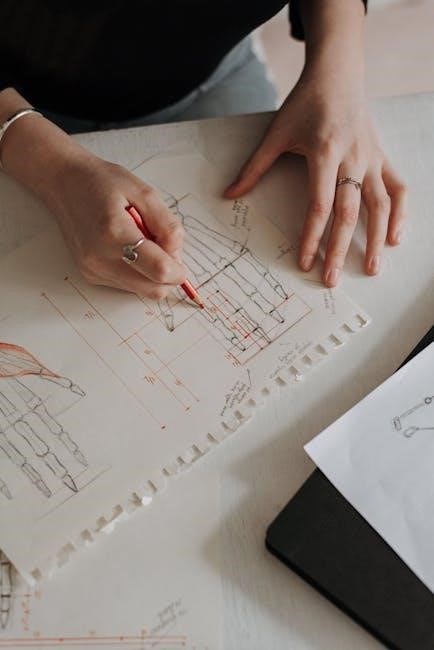pressure cooker instruction manual
and troubleshooting tips to ensure optimal performance and longevity of the appliance with proper care and handling always․
Understanding the Basics of Pressure Cooking
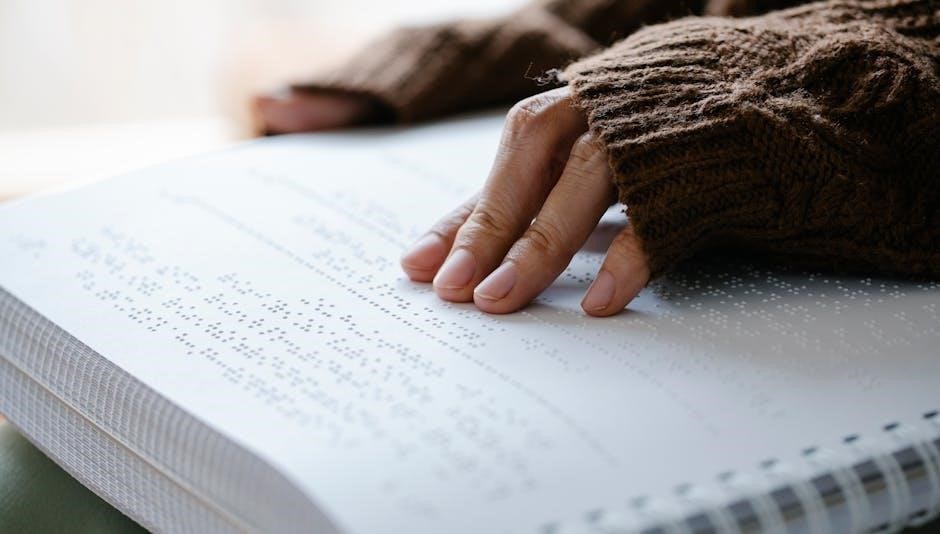
Pressure cooking is a method of cooking that uses steam pressure to cook food quickly and efficiently․ This technique allows for faster cooking times and can help retain the nutrients and flavors of the food․ The pressure cooker works by trapping the steam inside the pot, which increases the pressure and temperature, allowing for faster cooking․ The basics of pressure cooking involve understanding how the pressure cooker works, including the role of the sealing ring, the valve, and the pressure regulator․ It is also important to understand the different types of pressure cookers, including stovetop and electric models, and their respective advantages and disadvantages․ Additionally, understanding the basics of pressure cooking involves learning about the different cooking methods, such as high pressure, low pressure, and sautéing, and how to use them to achieve the desired results․ By understanding the basics of pressure cooking, users can unlock the full potential of their pressure cooker and cook a wide variety of delicious and healthy meals․ The key to successful pressure cooking is to follow the manufacturer’s instructions and to use the correct cooking techniques․ With practice and experience, users can become proficient in pressure cooking and enjoy the many benefits it has to offer․
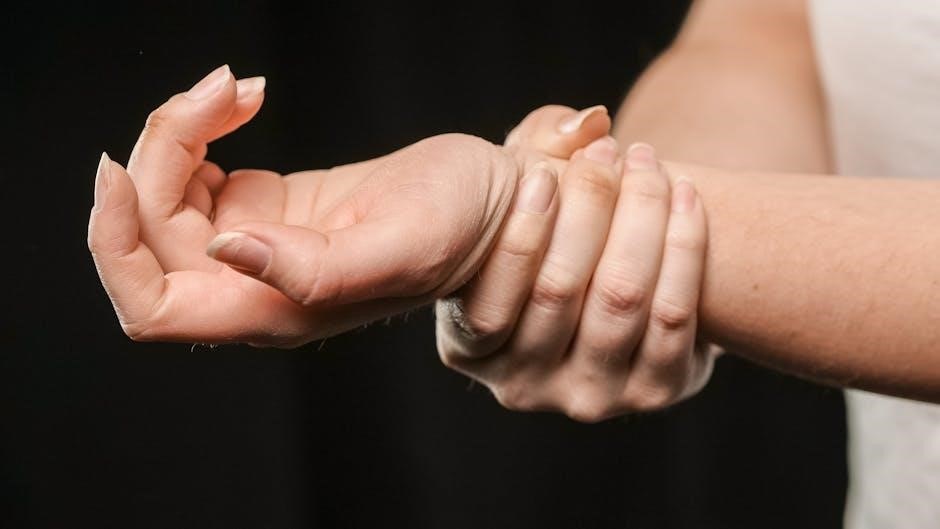
Preparation for Using a Pressure Cooker
Preparation involves reading the manual, inspecting the appliance, and assembling the parts to ensure safe and efficient usage always with proper care․
Reading the Manual and Inspecting the Sealing Ring
Reading the manual is a crucial step in understanding the pressure cooker’s components and operation․ The manual provides valuable information on safety precautions, usage guidelines, and troubleshooting tips․ It is essential to read the manual carefully to ensure safe and efficient usage of the pressure cooker․
Inspecting the sealing ring is also vital to prevent accidents and ensure proper functioning of the pressure cooker․ The sealing ring should be checked for any signs of damage or wear and tear․ A damaged sealing ring can lead to accidents and injuries, so it is crucial to replace it immediately if necessary․
The manual will also provide guidance on how to inspect and maintain the sealing ring, as well as other components of the pressure cooker․ By following the manual’s instructions and inspecting the sealing ring regularly, users can ensure safe and efficient usage of the pressure cooker․ Regular maintenance and inspection can also help to extend the lifespan of the pressure cooker and prevent costly repairs․
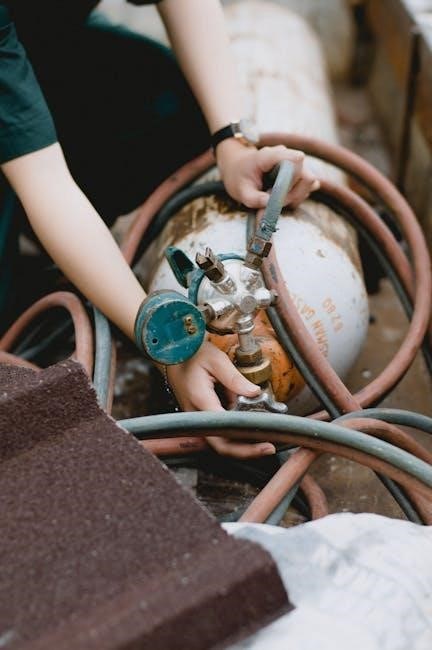
Cooking with a Pressure Cooker
Cooking with a pressure cooker requires attention to temperature and timing controls for optimal results always․
Easy Steps to Follow
To start cooking with a pressure cooker, follow these easy steps: add food and liquid to the pot, close the lid, and ensure the valve is in the correct position․ Select the pressure setting, either by choosing a cooking program and time for electric pressure cookers or by placing the cooker on the stovetop and turning the heat to high for stovetop models․ Wait for the pressure to build up inside the pot, then let the cooker do the work․ It is essential to check the recipe for specific cooking methods and times to achieve the best results․ By following these simple steps, you can create delicious and tender meals quickly and easily․ The pressure cooker’s ability to reduce cooking time and preserve nutrients makes it an ideal cooking method for various dishes․ With practice, you will become more comfortable and confident in using your pressure cooker to prepare a wide range of meals․ Always refer to the manufacturer’s instructions for specific guidance on using your particular pressure cooker model․

Choosing the Best Pressure Cooker
Consider factors like size, type, and features when selecting a pressure cooker to ensure it meets your cooking needs and preferences always with proper guidance․
Considering Factors and Models
When choosing a pressure cooker, consider factors such as size, type, and features to ensure it meets your cooking needs and preferences․ There are various models available, including electric and stovetop pressure cookers, each with its own unique characteristics and advantages․ Electric pressure cookers offer ease of use and convenience, while stovetop pressure cookers provide more control over cooking parameters․ Additionally, consider the material, durability, and safety features of the pressure cooker, such as a locking lid and pressure regulator․ Some models also come with additional features like timers, pressure indicators, and steam release valves․ It is essential to research and compare different models to find the one that best suits your cooking style and requirements․ By considering these factors and models, you can make an informed decision and select a pressure cooker that will provide you with safe and efficient cooking experiences․ The right pressure cooker can make a significant difference in your cooking results and overall satisfaction with the appliance․ Proper consideration of these factors will help you choose a pressure cooker that meets your needs and provides you with years of reliable service․
